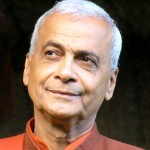by guest author Swami Karma Karuna, Anahata Yoga Retreat
There are more practical tools than can be described belonging to tantra and yoga that are beneficial for a woman’s body, mind and support the connection to the inner sacred space.
The practices all work in different ways with the ultimate goal of helping one to reconnect with their higher self or the inner Shakti, which in fact is the sacred feminine.
Shakti is the life force. When it is blocked or out of balance, physical and mental health becomes imbalanced.
When it is flowing, expanded and operating optimally, there is a feeling of strength, balance and ability to face life and all the challenges with a positive mind.
Each of us needs to find the right combination of practices for our particular physical, mental and emotional strengths and weaknesses and also discover the best way to integrate the practices in a practical way into daily life, so that they lead us towards our goals and help us to be sustainable and honour our needs.
The aim is that the tools become useful in every moment, not just as a formal exercise, but as an attitude in front of life. Listed below are a few favourites, but there are many more:
SWAN Technique – Knowing the Self
The first step is always self-analysis and understanding WITHOUT JUDGEMENT, simply observation.
SWAN is an acronym for Strength, Weakness, Ambition and Need and is a practice of self-exploration, allowing us to examine our own nature. The process of SWAN gives us the clarity within ourselves to express the best qualities, transform weaknesses, direct ambitions with awareness and honour the real needs.
Strengths are those positive attributes that we are born with, or that we acquire, that help us to evolve (faith, persistence, physical strength, a caring nature, knowledge, patience etc.)
Weaknesses are the traits in our personality that hinder our progress (laziness, jealousy, hatred, possessiveness, greediness, anger and procrastination etc.)
Aims or Ambitions are the desires that drive us to accomplish our goals so that we feel fulfilled (money, power, praise, fame, transformation, service etc.)
Needs are food, a home, love, friends, health etc. Needing something is different from wanting something. Needs help you to create your ambitions.
The four aspects above can be broken down into four categories: physical, mental, emotional and spiritual.
As a written exercise, write down your strengths and weaknesses. Be totally honest with yourself. Next, list your ambitions:
- What do you want to achieve?
- What do you aspire towards?
- Write anything that comes into your mind.
Then, write down your needs – not necessarily what you want but what you need. Don’t judge what you have written down. When you have compiled four pages listing your strengths, weaknesses, ambitions and needs, use the four categories (physical, mental, emotional and spiritual) to deepen your understanding of yourself.
This practice done as a daily or weekly sadhana can gradually bring understanding of the self .
ASANAS – Postures for a Woman’s Body
Asana are specific body postures, which open physical, mental and emotional blocks and provide the stable foundation for exploring the body, breath, mind and beyond. While most practices can be used by men or women some of the below are particularly suited to a women’s body.
It is important to receive expert guidance on a personal practice, as each one’s needs are individual and some of these may be contra-indicated for your particular challenges.
- Marjariasana (cat pose) or Vyagrasana (tiger pose) – for menstrual regularity and toning or reproductive organs.
- Shashankasana (child’s pose) – regulates adrenal glands, calms anger, tones pelvic muscles, alleviates disorders of reproductive organs.
- Shashank-bhujangasana (striking cobra) – tones reproductive organs, alleviates menstrual disorders, tightens abdominals.
- Khandarasana (shoulder pose) – tones female reproductive organs and recommended for women at risk of miscarriage.
- Vipareeta karani or Sarvangasana (inverted pose/shoulder stand) – stimulates thyroid and parathyroid glands, balancing circulatory, digestive, reproductive, immune and nervous systems. Relieves mental and emotional stress, fear and headaches.
- Saral Dhanurasana or Dhanurasana (half or full bow pose) – Pancreas, adrenal glands toned. Kidneys massaged. Used in yoga therapy for menstrual disorders.
- Moola Bandha – Bestows a myriad of benefits, including stimulating pelvic nerves and toning the uro-genital and excretory systems. Relieves depression and leads to spontaneous realignment of the physical, mental and psychic bodies.
PRANAYAMA – Breathing Practices to increase the Shakti
The word pranayama is comprised of two roots: prana plus ayama. Prana means ‘vital energy’ or ‘life force’. Ayama is defined as ‘extension’ or ‘expansion’. Therefore, the word pranayama means extension or expansion of prana.
Prana in itself, is considered the life force, the Shakti, which sustains the universe and the human body. When flowing well, it enhances health and vitality.
Lack of or blocked prana is the cause of mental and physical imbalances.
On a physiological level, the blood is enriched with oxygen and toxins are eliminated from the body during pranayama practice. Different types of pranayama affect the body and mind in subtle ways such as heating and vitalizing and cooling and calming.
Each person will need a selection of pranayamas particularly suited to them, and pranayama should always be learned under guidance from a fully trained teacher.
The below two pranayamas are beneficial for most people and particularly helpful for many women’s needs:
- Bhramari (bee breath) – relieves stress, alleviates anger, anxiety and insomnia. Reduces high blood pressure and speeds up the healing of body tissue.
- Nadi Shodhana (alternate nostril breathing) – induces tranquility, clarity and concentration. Lowers stress and anxiety. Leads to states of meditation and spiritual awakening.
SHAVASANA – Relaxation Pose
Shavasana is a deep relaxation position done lying on the back, arms slightly separated from the body, with the palms turned upwards and legs gently falling to the sides. In shavasana, the heart is exposed, the abdomen softens and the inner thighs are released; yielding the deep tensions and holding on all levels and replacing them with a sense of total trust.
Further, shavasana is a practice that leads to pratyahara or withdrawal from the senses. In this day and age, our senses are absolutely overstimulated, and shavasana gives the practitioner a welcome break from the constant onslaught of the external world, thus it has earned its place as a favorite for many students. It also initiates the relaxation response in which the blood pressure, heart and breath rate all drop.
When life becomes intense, a 5-minute shavasana break can alter the perspective and give enough rest to keep going with the activities with a new attitude.
For full benefits, Satyananda Yoga Nidra is highly recommended, for more info on Satyananda Yoga Nidra click here.
MANTRA – Positive Sound Vibration
Mantra is sound vibration. “Man” relates to the mind and “Tra” means releasing, so the meaning of mantra is liberation of the mind from bondage.
Mantras are usually based on the Sanskrit language, which is composed of 52 sounds that are said to make up matter. When these letters are combined, it produces a mantra. They have an effect on the mental and psychic consciousness, operating directly on the deep mind by creating vibrations, which stir the roots, so that they are pulled out gradually. Sound is energy and has an explosive force like dynamite.
As a mantra is repeated it begins to explode these knots held in the unconscious mind and free the energy to move and expand.
There are many mantras related to the different expressions of Shakti (see part 3) and when chanted they connect us to the inner qualities associated with that sound vibration.
ANTAR MOUNA – Inner Silence Meditation
The practice of Antar Mouna or “inner silence” is an ancient system of befriending the mind. One learns to be the observer of all the constant sensorial inputs and gains the capacity to witness the spontaneous thoughts, emotional reactions and mental experiences in a cool and impartial way.
As a modern woman, we might not be able to change all the external situations e.g. we may need to work, we cannot give away the children or husband when they are pressuring us; so we need tools to manage the different components of life.
The attitude of being a witness allows one to engage in all the activities of life with a full heart, but empowers the practitioner with a free and unaffected mind. This practice can be done formally in a sitting meditation, which is important to train the mind, but ultimately, it is an attitude behind every other practice and every other experience in life.
For further instructions and practical tools you can purchase my CD Yoga for Women – Awaken the Inner Shakti.
About Swami Karma Karuna
Swami Karma Karuna has received yoga training in Nepal, India and Australia. She spends 3 months each year living and teaching in India at the home and sadhana place of Swami Satyananda.For more information on these guided yoga retreats to India and the World Yoga Convention in Bihar click here.
She also travels internationally part of the year, committed to sharing Yoga Solutions for Life™ – simple & powerful techniques for transformation. Swami Karma Karuna specialises in women’s health. By blending yogic lifestyle and Sannyasa tradition with motherhood, she brings a unique and practical approach, inspiring the integration of yogic principles into everyday activities.
“A gracious woman respects herself and others. Her inner strength radiates a divine light that transforms and supports everything around her.“



Leave a Reply